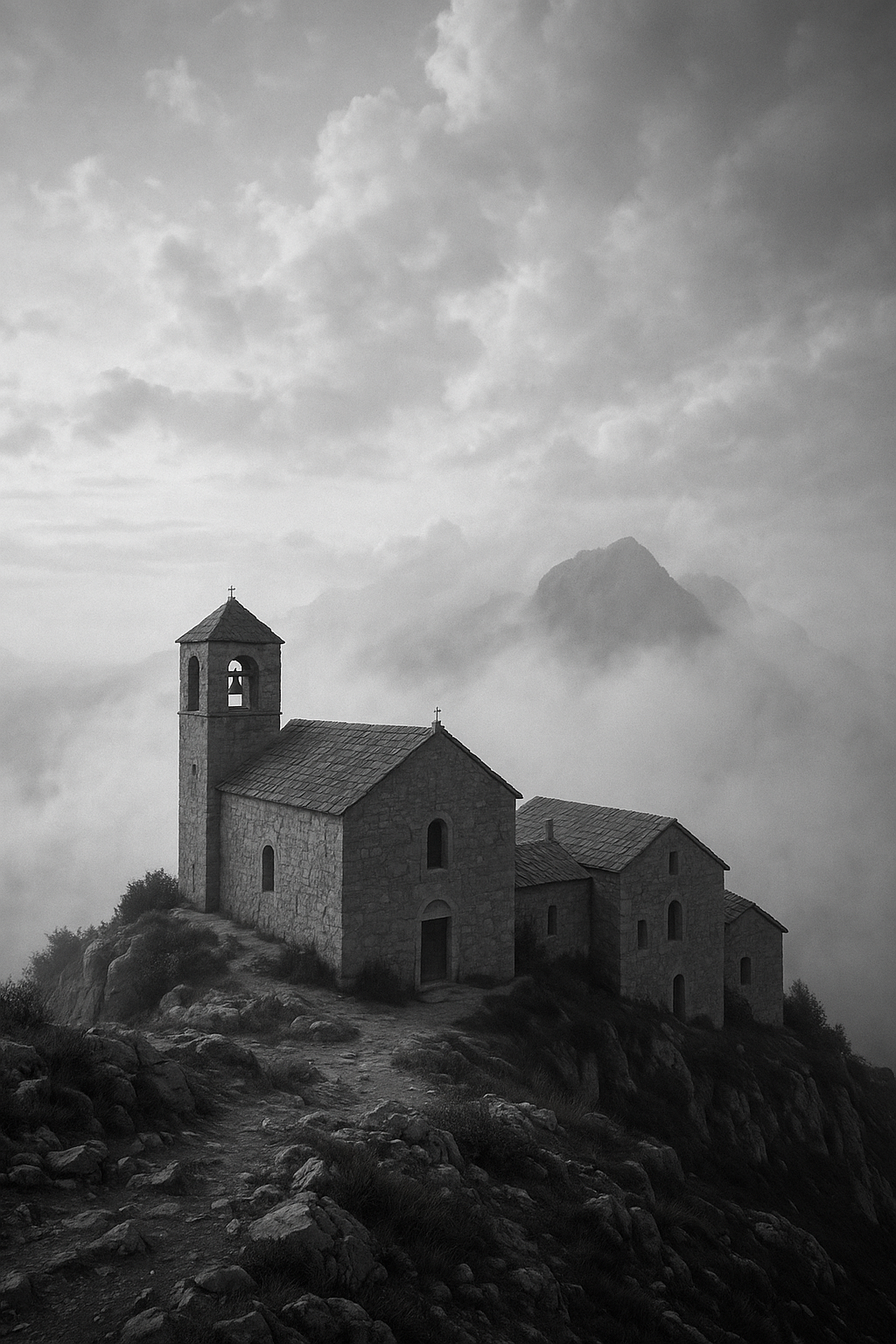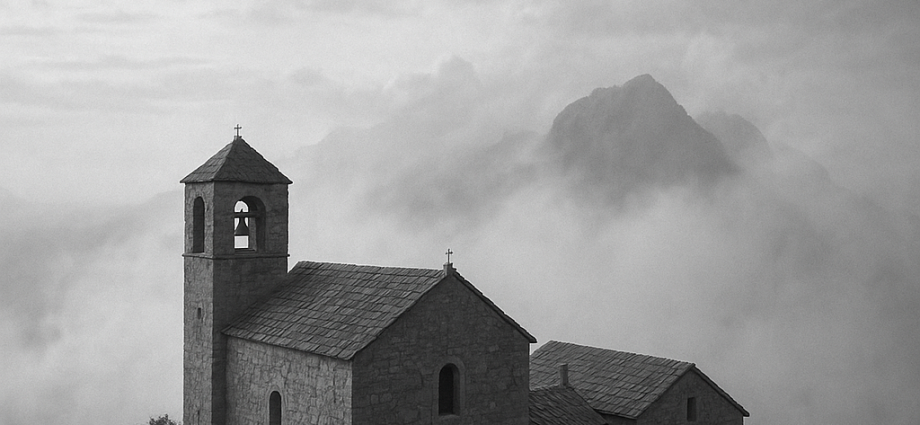By Special Correspondent, Southern Bureau
The road to Mount Saint Caradoc begins like any other: cobbles, cottages, and the quiet chatter of travellers who still believe they know where they are going. But an hour beyond the last tavern, the landscape changes. The hedgerows fade, the air cools, and the path begins to wind upward through heather and thin mist. By the time one reaches the foothills, the only sound left is one’s own breathing—and the distant toll of a bell that no one can quite locate.
The mountain stands alone on the southern horizon, its shoulders cloaked in cloud. Pilgrims describe it as less a place than a presence, something that seems to regard those who climb it with mild, ancient curiosity. The ascent is not steep, but it is steady, and the path twists like a thought that refuses to end.
Along the way lie the Stations of the Road, fourteen small shrines built of rough stone, each marking a legend of Saint Caradoc—the hermit who, eight centuries ago, is said to have prayed so long in the wind that the mountain itself grew tired and leaned to shelter him. At the first station stands a weathered carving of a man holding a lantern against the storm. At the seventh, the lantern has gone out. At the last, the saint is depicted sleeping, the mountain bending protectively above him. None of the carvings match the others in style or proportion, yet together they form a story both unfinished and inevitable.
 The air grows thinner near the summit. Clouds drift across the path like smoke, and every breath carries the taste of rain. Yet now and again, a break in the mist reveals the valleys below—patches of green and gold, tiny rivers glinting like wire. “Heaven’s embroidery,” a fellow traveller murmurs beside me, clutching his walking stick. We speak little after that.
The air grows thinner near the summit. Clouds drift across the path like smoke, and every breath carries the taste of rain. Yet now and again, a break in the mist reveals the valleys below—patches of green and gold, tiny rivers glinting like wire. “Heaven’s embroidery,” a fellow traveller murmurs beside me, clutching his walking stick. We speak little after that.
Halfway up lies a narrow plateau known as the Pilgrim’s Rest, where a stone well bubbles quietly beside a solitary oak. The water is cold and faintly metallic. Local superstition insists that if one drinks from the well while thinking of a single honest question, the mountain will answer before the journey’s end. I ask nothing, though later I realise that silence may have been an answer of its own.
The final approach winds along a cliff where the wind sings through fissures in the rock, producing tones like an unseen organ. Old maps call this stretch The Choir of the Wind, and the name fits. It is difficult to tell whether the sound is holy or simply geological, though perhaps those are the same thing here.
At last, after six hours’ climb, the path opens suddenly onto the summit plateau. There, perched among clouds like a white shell half-buried in stone, stands the Monastery of Saint Caradoc. Its walls are simple lime-washed blocks, its bell tower crooked, its roof patched with slate from the surrounding cliffs. The monks—only twelve in number—maintain a small garden of alpine herbs and keep bees that hum lazily in the thin air.
The Abbot, Father Severin, greets travellers at the gate with a nod and a phrase that serves both as welcome and warning: “You may rest here, but you may not stay.” Pilgrims are offered bread, honey, and a bed of straw in the guesthouse. No payment is accepted. In the refectory, the only light comes from narrow windows and the flicker of a single oil lamp. Conversation is minimal; the silence of the mountain seems to have entered every wall.
At dawn, the bell sounds—a deep, resonant tone that rolls outward across the clouds. The monks assemble in the chapel, their chant low and steady, the language older than the Kingdom itself. There are no sermons, no exhortations, only repetition—the rhythm of breath and devotion. I stand at the threshold listening, unsure whether they are calling to heaven or echoing it.
Outside, the world begins to brighten. The mist thins, revealing peaks bathed in gold. From here one can see nearly the entire southern coast, the sea glimmering faintly in the distance. It is said that on clear days, the faint shimmer of the Lantern Isles is visible far away, their glow like tiny candles upon the horizon.
When I begin the descent, Father Severin presses into my hand a small piece of slate scratched with a single word: “Endure.” He says nothing else. The wind carries the sound of the bell long after the monastery has vanished from sight.
By the time I reach the foothills again, the ordinary noises of the world—voices, cart wheels, the bark of a dog—seem almost indecently loud. Yet somewhere behind them I can still hear the mountain breathing, slow and patient, waiting for the next pilgrim to listen.
